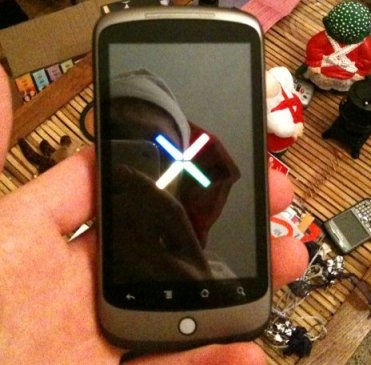 Google Inc.’s vision for how a mobile phone should be made and sold will likely raise the stakes in the Internet search leader’s bid to gain more control over how people surf the Web while they’re on the go.
Google Inc.’s vision for how a mobile phone should be made and sold will likely raise the stakes in the Internet search leader’s bid to gain more control over how people surf the Web while they’re on the go.
The catalyst in Google’s latest attempt to shake up the mobile market apparently will be the Nexus One, the first smart phone designed by the company’s own engineers.
Google has said little about the phone except to confirm that its workers received the handsets three weeks ago for a final round of internal testing. Google is expected to provide the first concrete details about the phone, along with the company’s vision for how such devices should be made and sold, during a press conference on Tuesday at Google’s headquarters in Mountain View, Calif.
In its invitation to the event, Google said the wireless market had only seen “the beginning of what’s possible” with the free Android operating system that it introduced for mobile phones in late 2007.
Android was designed to make it easier to interact on a mobile phone with Web sites and services, including Google’s, while providing an egalitarian platform to run applications developed by outside programmers. The applications don’t have to go through an extensive review before they can be distributed to Android-powered devices, a contrast from the control that Apple Inc. holds on its hot-selling iPhone.
Until now, Google has been content to let other companies design the devices relying on Android. And those devices thus far have largely been distributed like most other mobile phones, tethered to major wireless carriers that typically require buyers to lock into two-year contracts in return for discounts on the handsets.
But Google now appears to be ready to push its operating system in a new direction while trying to give consumers more flexibility to connect a mobile phone with the wireless carrier of their choice.
Google intends to stamp its own brand on the Nexus One and sell it directly to consumers over the Web, leaving it up to the buyers to pick their own carriers, according to reports published in technology blogs and major newspapers. That could open new possibilities while igniting new tensions in the mobile phone market. Just how much Nexus One shakes things up will likely hinge on the phone’s price.
Most smart phones designed for Web access sell for $50 to $200, thanks to subsidies provided by wireless carriers in return for commitments to service plans that cost $800 to $1,000 a year. Without the financial aid, the phones would sell for $400 to $600 — a range that most consumers have been unwilling to pay, especially in a shaky economy.
T-Mobile has agreed to provide a subsidy for a Nexus One that works on its wireless network, according to published reports. Such an agreement wouldn’t represent a substantial change from the status quo.
Yet Google appears to be betting that the Nexus One will make a big enough splash to persuade other major U.S. wireless carriers — AT&T Inc., Verizon Wireless and Sprint Nextel Corp. — to subsidize the device, too, said technology analyst Rob Enderle.
“If enough customers want this phone, the carriers will have no choice but to follow,” he predicted.
That would also break the traditional practice of giving carriers the right to sell specific models exclusively for a certain period.

Another option is for Google to simply sell the phone at the full price, banking that it’ll be attractive enough for buyers looking for the freedom to choose their own carrier. A smart phone that empowers consumers to choose from a variety of carriers could post a threat to the iPhone, which is tied exclusively to AT&T in the United States. That tie-in has spurred complaints from some iPhone users who say AT&T’s network bogs down amid heavy Web traffic, particularly in big cities such as New York and San Francisco.
With the competition between the two companies heating up, Google Chief Executive Eric Schmidt resigned from Apple’s board five months ago.
Selling its own phone also could foster more resentment toward Google among the business partners that have been backing Android as a viable alternative to the mobile operating systems made by Apple, BlackBerry manufacturer Research in Motion Ltd. and Microsoft Corp.
Verizon, for instance, has raised consumer awareness about Android during the past two months by bankrolling a marketing blitz for the Droid phone made by Motorola Inc.
In an effort to keep the peace, Google probably will try to position the Nexus One as a way to encourage even more innovation with its Android system, said Forrester Research analyst Charles Golvin.
“They might tell everyone in the Android ecosystem, ‘We applaud you for what you have done so far, we just want to take things even further and think we can help light the way,'” Golvin said.